
Dussehra Bastar, a hindu-ethnic festival
Dussehra is a festival celebrated mainly in North India; It takes place after the nine days of the Navaratri festival and marks the victory of the God Rama over the king-demon Ravana or the triumph of the Goddess Durga over Mahisasura. However, the Dussehra Festival of the Bastar region in the state of Chhattisgarh is totally unique: it is dedicated to Devi Danteshwari, the native goddess of the region, and draws its roots and its originality from the tribal culture.
Dussehra Bastar has another particularity, the festival lasts 75 days against 1 day normally. It begins at Amavasya, the dark moon of the month of Shravan, and ends on the thirteenth day of the brilliant moon of Ashwin’s month. This corresponds roughly to the period from July to September in our Gregorian calendar.
Danteshwari Goddess
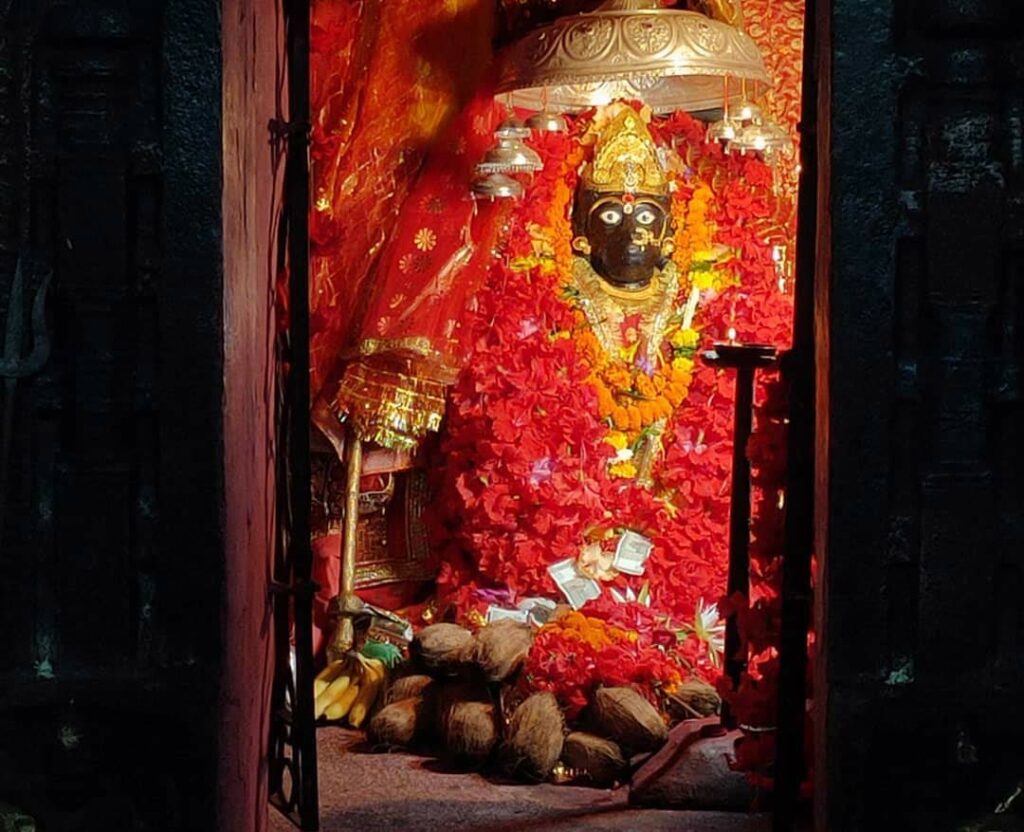
Danteshwari is an avatar of goddess Durga and one of the most venerated Shakti Peeth. Local tribes have integrated this deity along with their local deities called ‘Anga Deo’ (see below). Danteshwari is highly respected by the tribes: according to a local legend, she saved the king of Bastar from several attackers by protecting him in a forest. Since that time the tribes have continued to pay tribute to her.
Origins of Dussehra in Bastar
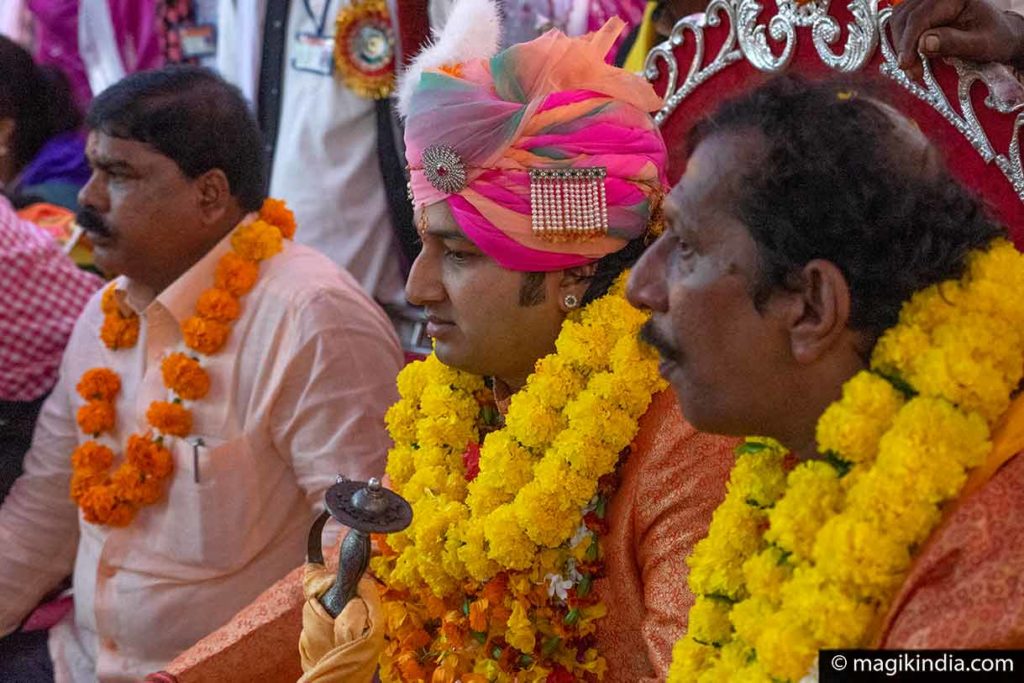
Legend has it that the Bastar Dussehra tradition dates back to the Maharaja Kakatiya Purushottam Deo (descendant of the great Chalukya dynasty); It is said that he walked one year in prosternation to reach Jagannath temple in Puri to honor Jagannath (Lord Krishna).
Jagannath was pleased by the king’s penance and, as a reward, he offered him a 12-wheeled chariot for the return journey and he also gave him the name of ‘Rath Pati’ (divine chariot driver). On the way back, that chariot was broken up into two, an eight and a four-wheeler chariot.
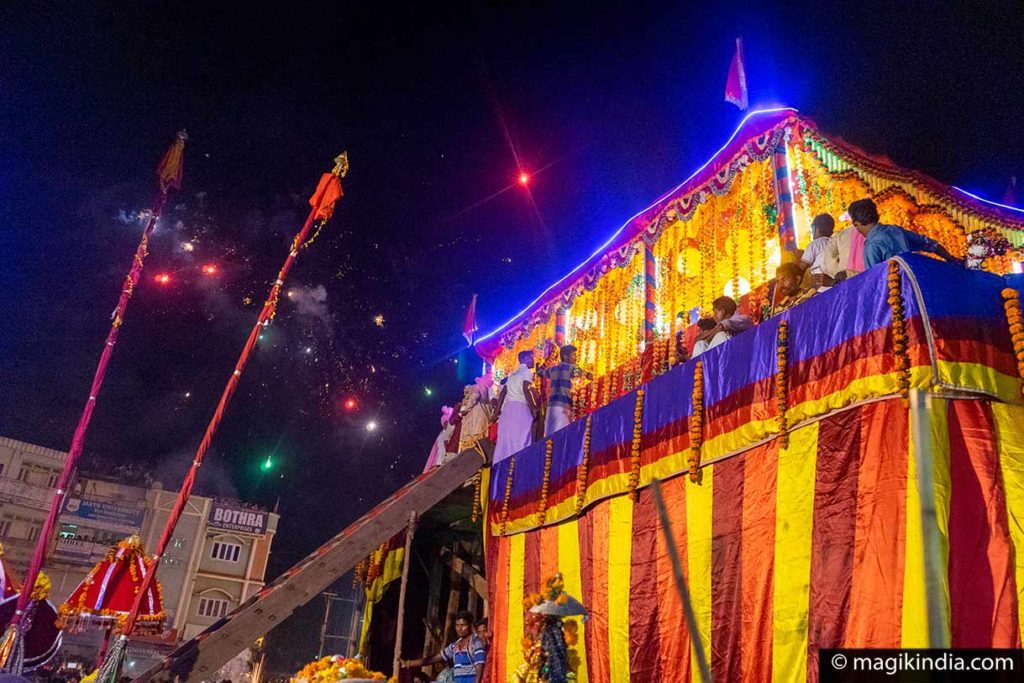
From then on, this tradition have continued; it is a festival that is now 500 years old. The two current chariots processing in the streets of Jagdalpur are supposed to be replicas of those two chariots given by Krishna to the king Kakatiya Purushottam Deo.
Originally a Hindu tradition, this festival then incorporated and assimilated the customs of local tribes. It was a way somehow for the king to unite all tribes and traditions of Bastar.
Anga Deo, the tribal deities of Bastar
During the Dussehra Festival, all the tribes of the Bastar region come to Jagdalpur accompanied by their local deities who are represented by a kind of decorated wooden palanquins called ‘Anga Deo’. These divinities are the primitive forms of religious idols, close to animist practices.
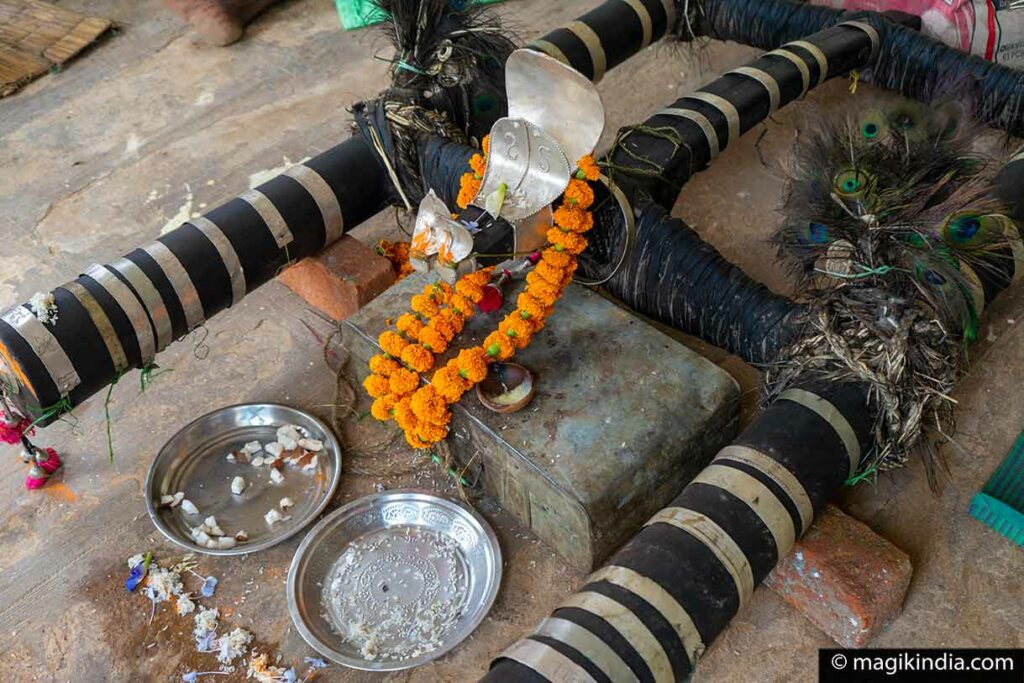
During Bheetar Raini, the day when the 8-wheeled chariot goes on processionn Jagdalpur, the Angas – sorts of tribal sorcerers – carry these deities on their shoulders and, bewitched by the frenetic sound of percussions and moharis (sort of clarinets), they dance and go into a trance (with the great help of mahua or silpi, the local beers) ;). These trances are meant to cast out evils.
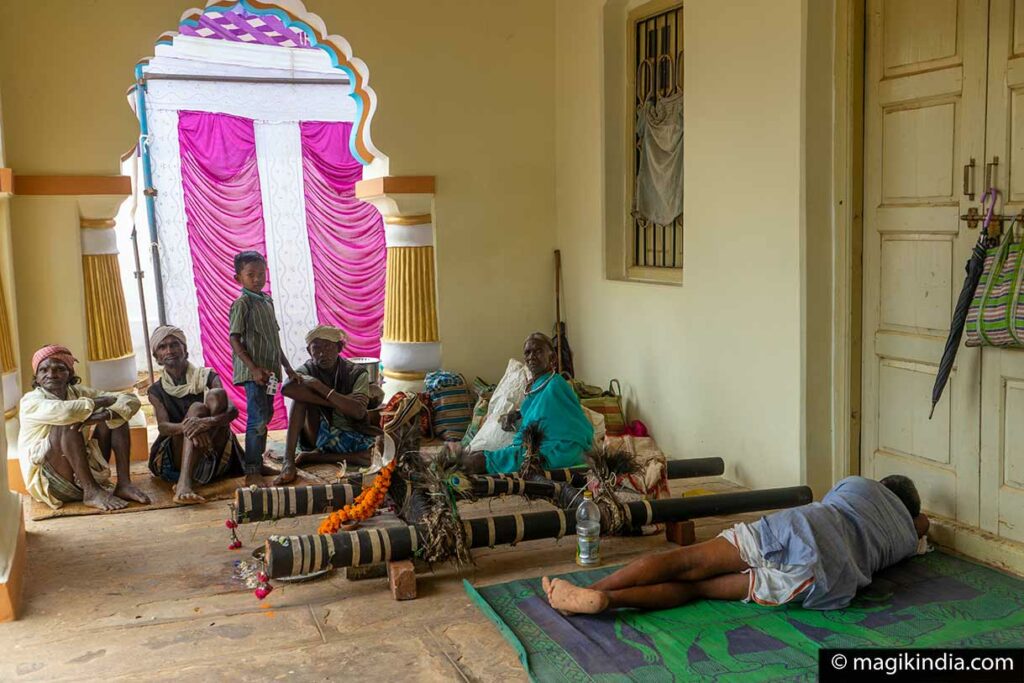
[ Watch! Anga Deo trance dance]
Highlights of the festival
Although the festival lasts 75 days, the last 10 days (corresponding to the common Navaratri) that end the festival are the most important and especially the last two days when the huge 8-wheeled chariot is pulled by hundreds of men.
Here are the main steps (non-exhaustive list) of this unique festival.
Paat Jatra, the trunk ceremony
Dussehra, in Bastar, begins with the ritual of Paat Jatra, the day of Hariyali Amavasya (‘Amoos Teehaar’ in the local language) in the month of Sharavana dedicated to the god Shiva (in July in our Gregorian calendar). Hariyali Amavasya is considered a very auspicious day and celebrates also the arrival of the monsoon.
During this ritual, a trunk of salt tree is cut in the forests of Bhilori and brought before the temple of the goddess Danteshwari. Several rituals are then performed on the trunk including goat sacrifices *.
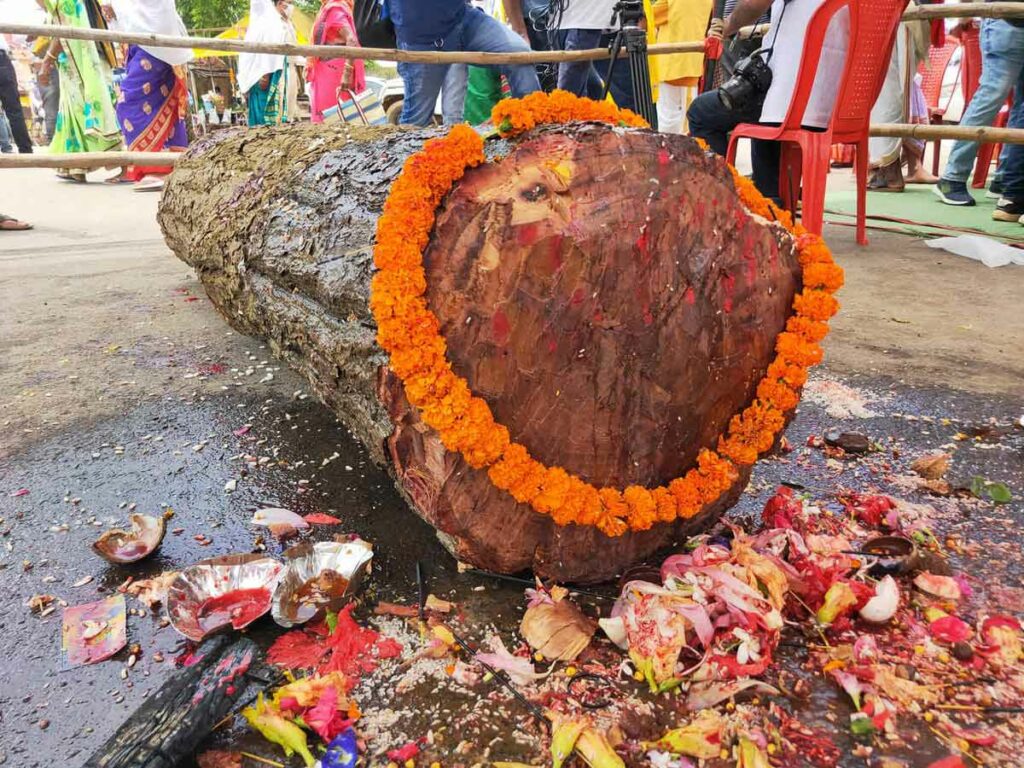
This trunk ceremony not only inaugurates the festival but the trunk will be used to manufacture wooden tools for the construction of the 8-wheels chariot that will go on procession during the last days of the festival.
* The animal sacrifices still remain in force in India even if they are more and more decried. They are mostly performed during tantric rituals in several temples in the north dedicated to the goddess Durga like in Guhawati or Kolkata.
About Sal tree

Sal tree is growing mainly in tropical rainforests. It is not only used as a timber but it is also a sacred tree in India. It is said that Buddha meditated in a forest of sal trees near Kushinagar at the time of his Parinirvana (his physical death) and that the flowers of this tree have fallen as a sign of respect completely covering his body. In Jain faith, it is said that the tirthankara Mahavira, one of the major saints of this religion received spiritual enlightenment under a sal tree.
Kachan Gadi
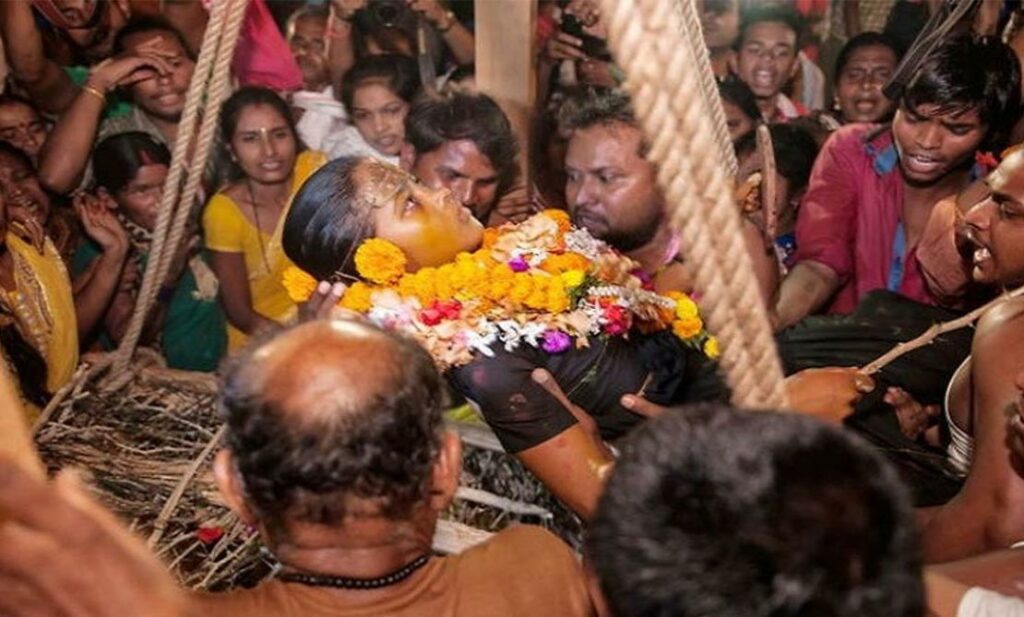
The ceremony of ‘Kachan Gadi’ is considered to be a symbolic authorization of the deities to begin the festival.
It takes place in an ancient temple dedicated to the goddess Kachan. The Maharaja of Bastar arrives in procession to ask the goddess to bless the festival.
This blessing is made through a young girl who enters a trance on a swing made of branches and thorns. She becomes the incarnation of the goddess Kachan Devi and grants the Maharaja her permission to proceed with the festivities.
The last 10 days (Navaratri)
JOGI BITHAI (penance of the Jogi)
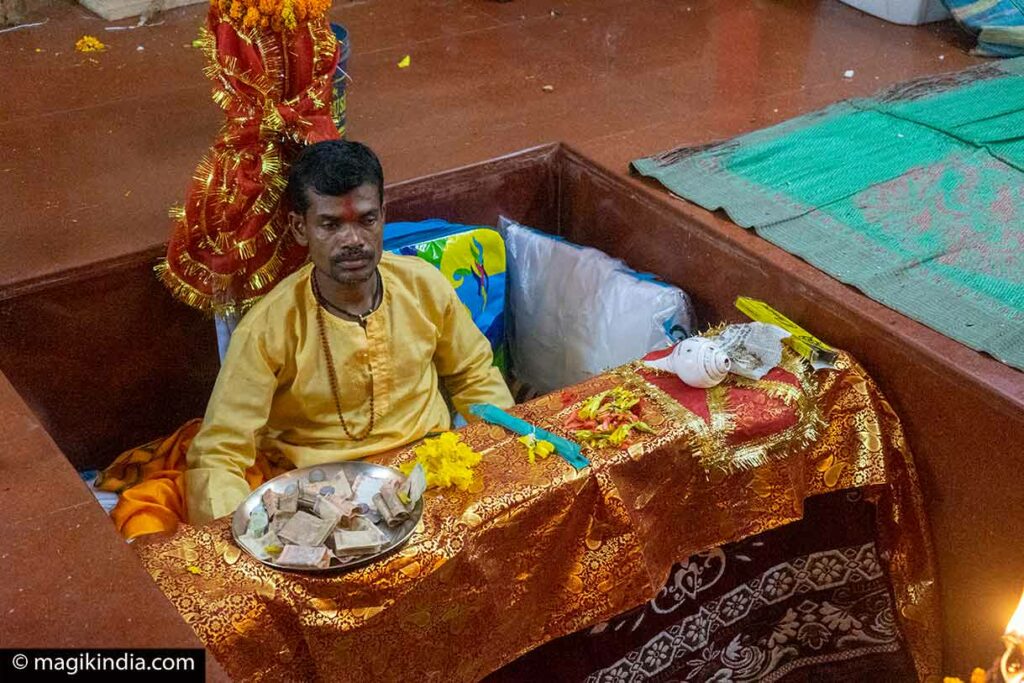
On this day, a youth from the Muria tribe is designated to sit in a pit in Jagdalpur near the palace, and undertakes a nine-day fast. This penance aims to ensure the smooth running of the festival.
NISHA JATRA
Nisha Jatra is a ritual performed in the morning at Danteshwari Temple at Jagdalpur Palace. In the evening, the Maharaja and the priests of the temple come to worship the arms of the goddess Danteshwari and then twelve men of the community bring offerings in earthen pots.
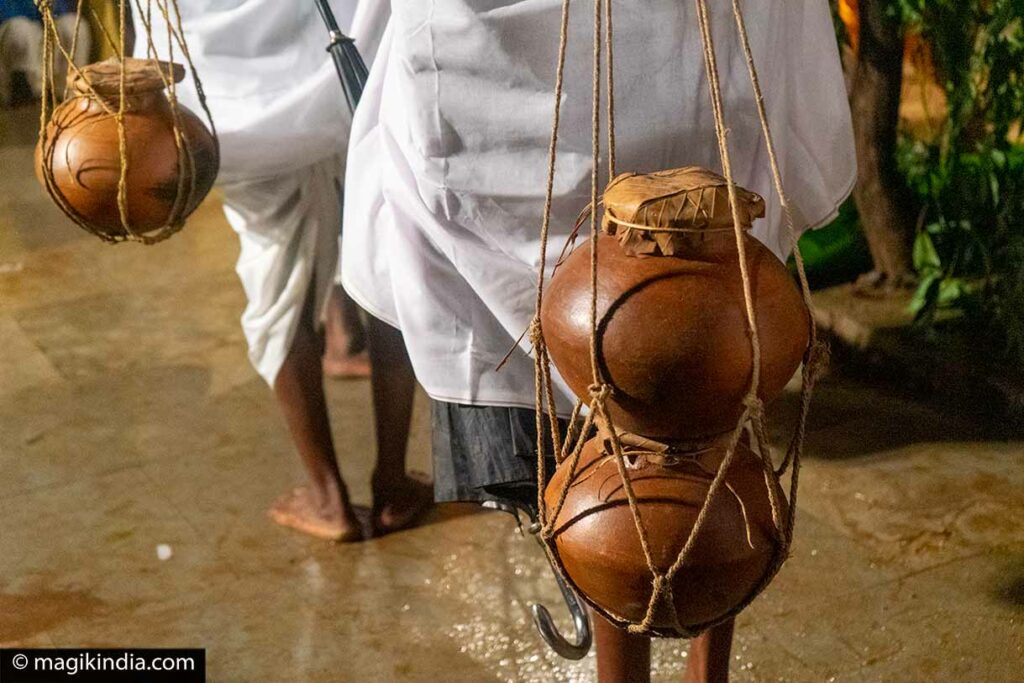
JOGI UTHAYEE & MAVLI PARGHAV

On the ninth day, the jogi breaks his fast and he is honored for his effort, this day is called Jogi Uthayee (the rise of the yogi).
That same day the Mavli Parghav procession takes place: the goddess Mavli leaves her temple of Dantewada and she is brought on a palanquin until Jagdalpur. She is welcomed by the king with great pomp.
This day is also an opportunity to see the Bison Horn Maria tribes performing their famous dances.
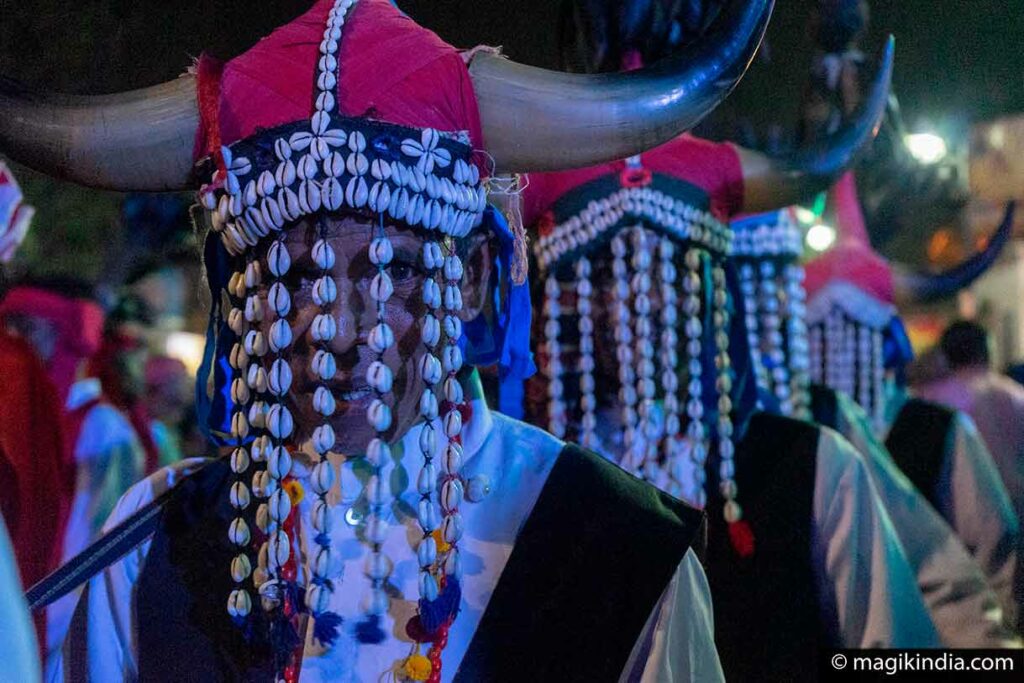
BHEETAR RAINI
Bheetar Raini is the culmination of Dussehra Bastar’s festivities: it is the moment when the umbrella of the goddess Danteshwari is carried in procession through the city on the huge 8-wheeled chariot, pulled by the ‘Bison Horn Maria’ tribe men.
The atmosphere is frenetic and a little crazy especially when the Angas arrive and perform trance dances bearing on their shoulders the tribal deities Anga Deo (see above); Watch out, better not to be on their way at that very moment!
When the circumambulation of the 8-wheeled chariot in Jagdalpur is over, it is ‘stolen’ by about a hundred men from the Marias and Murias tribes and brought to Kumdakot a few kilometers from the city.
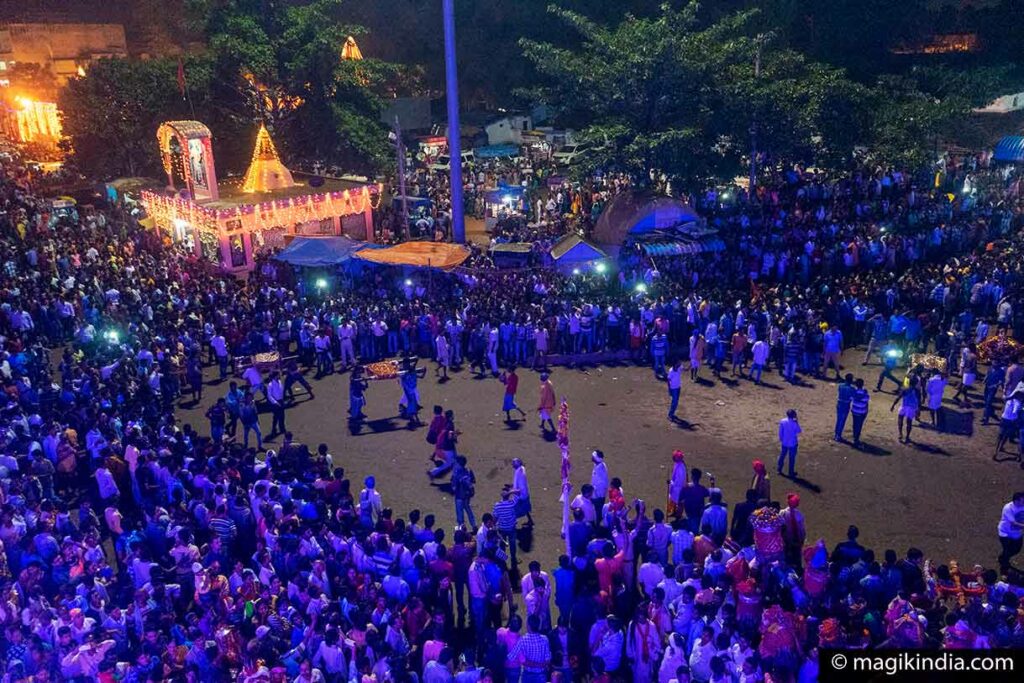
About the big chariot
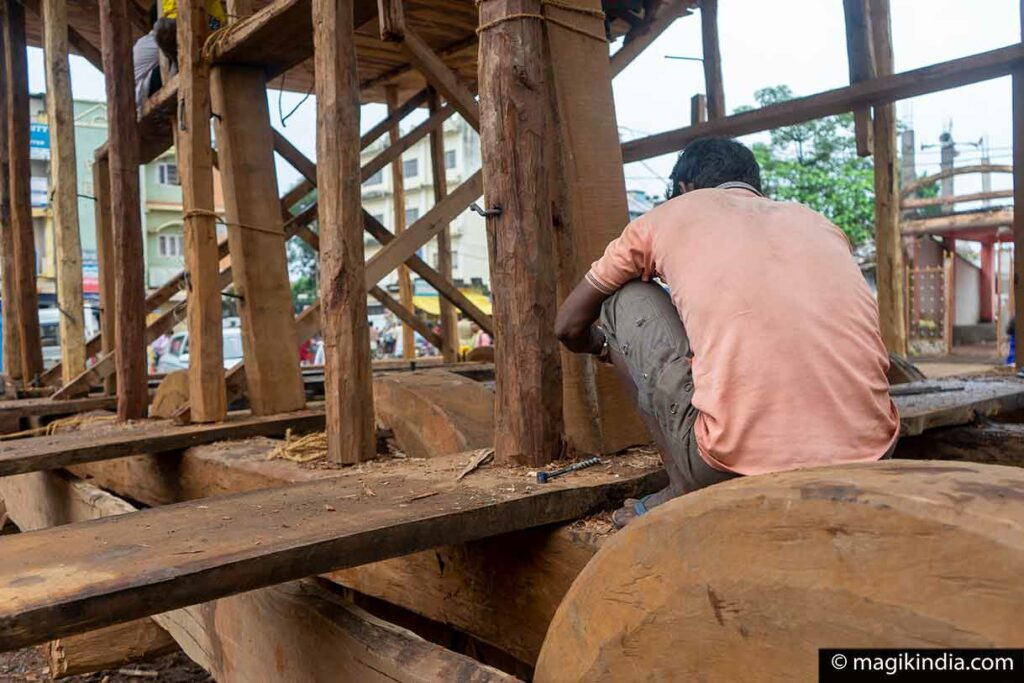
Each year, a new two-story Rath (chariot) is prepared for the festival, it is built in sal wood (see above).
Each tribe has a very specific role in the construction of this tank. For example, the carpenters come from the village of Beda Umargaon and the construction of the tank is exclusively made by the Saoras.pulled by Killepal’s bison-marias tribes.
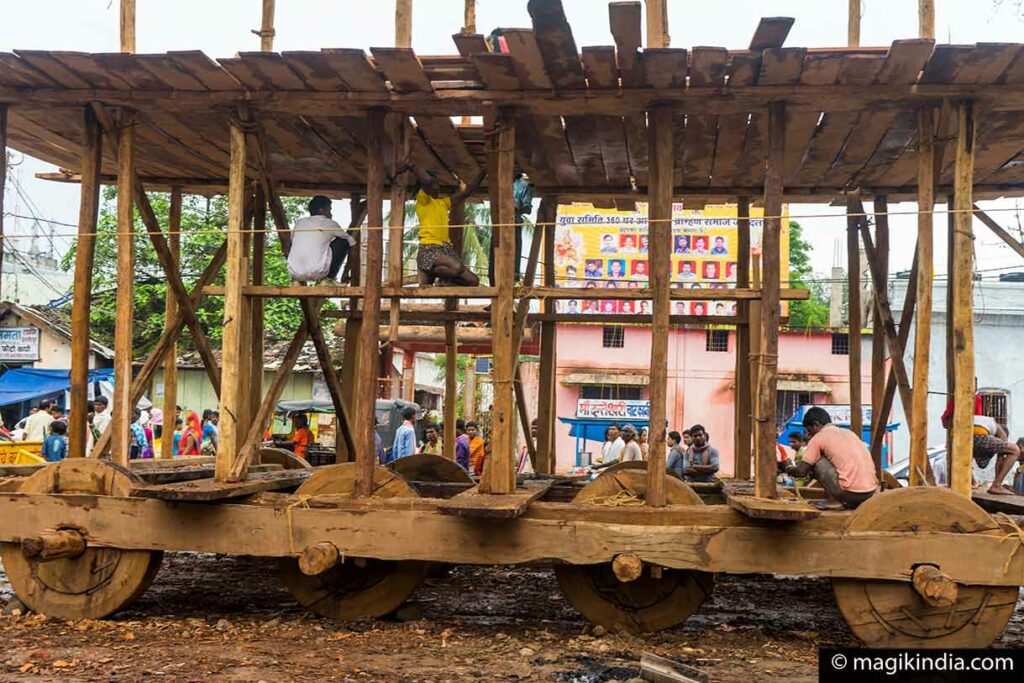
BAHAR RAINI
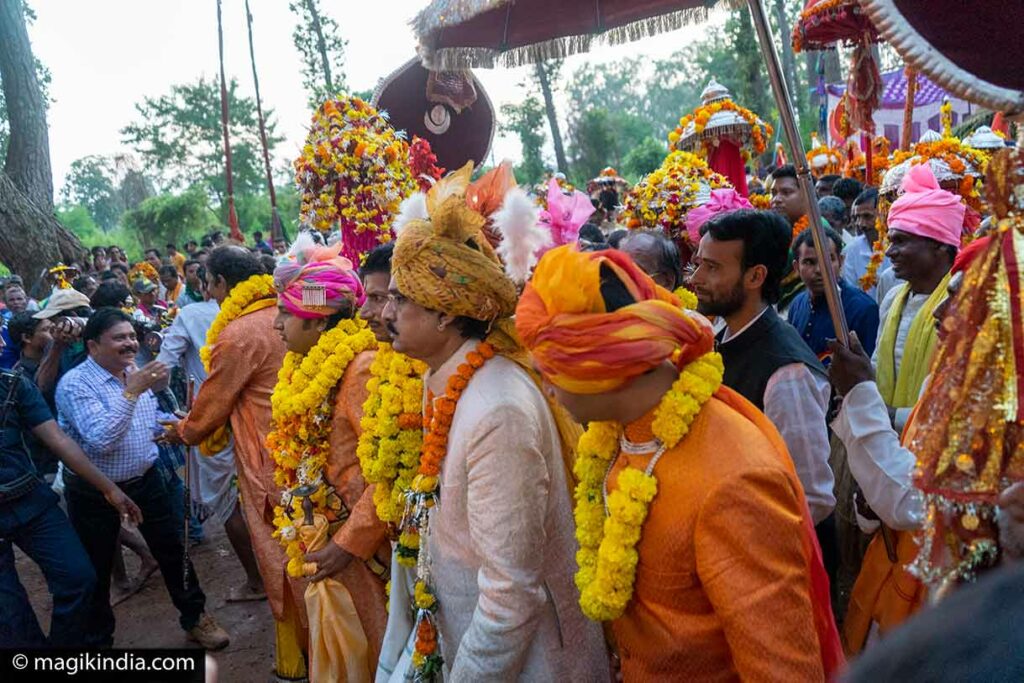
The day after Bheetar Raini, the king and his ministers go to Kumdakot to recover the ‘stolen’ car. The king visits a small hut to offer the goddess cooked rice from the new harvest. After that, the chariot is fired ceremoniously to the door of Jagdalpur Palace.
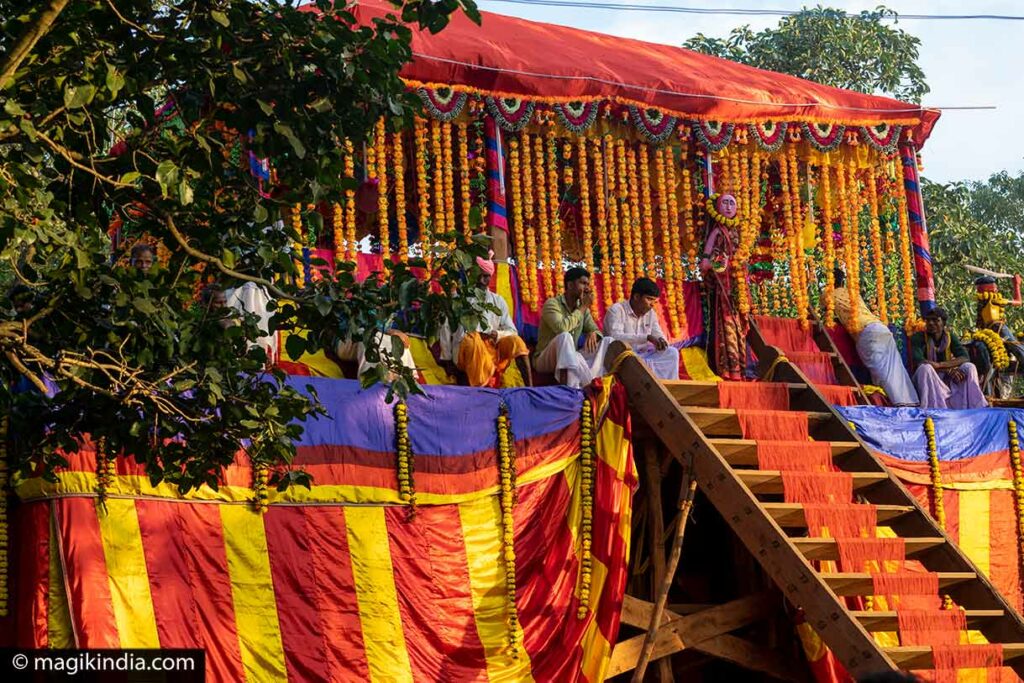
KUTUMB JATRA
After this incredible festival, it is time to say goodbye at the ceremony of KUTUMB JATRA (farewell to the deities): the local deities of various parts of Bastar gathered in Jagdalpur do their farewell ceremonially. A small sanctuary is created with banana leaves, flowers and offerings. At midnight, the great deity, Danteshwari Devi, goes back to his temple in Dantewada.
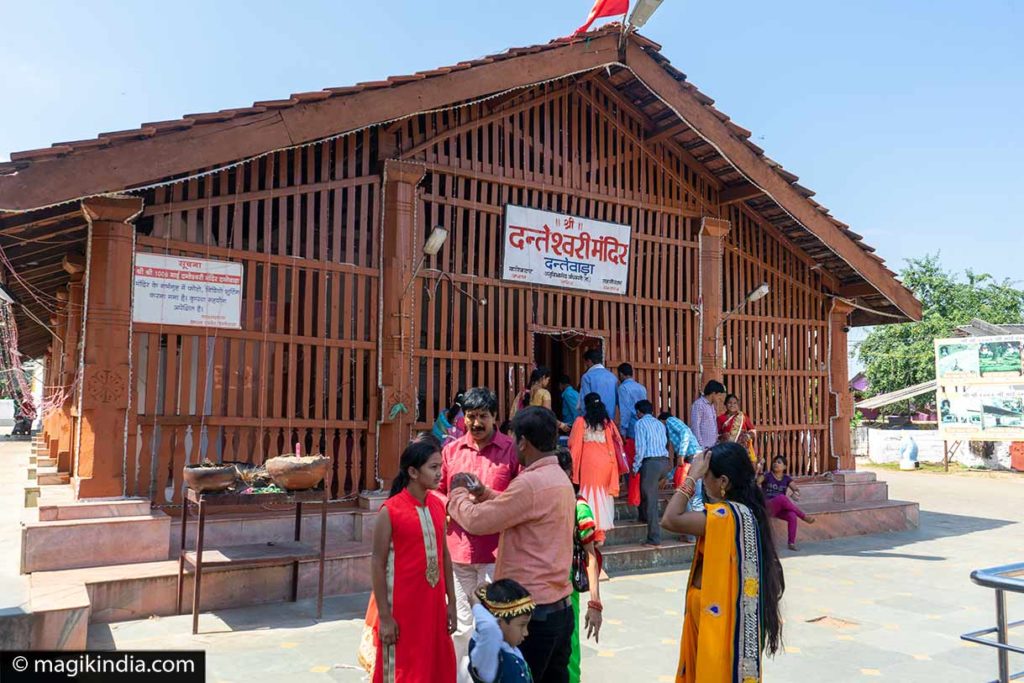



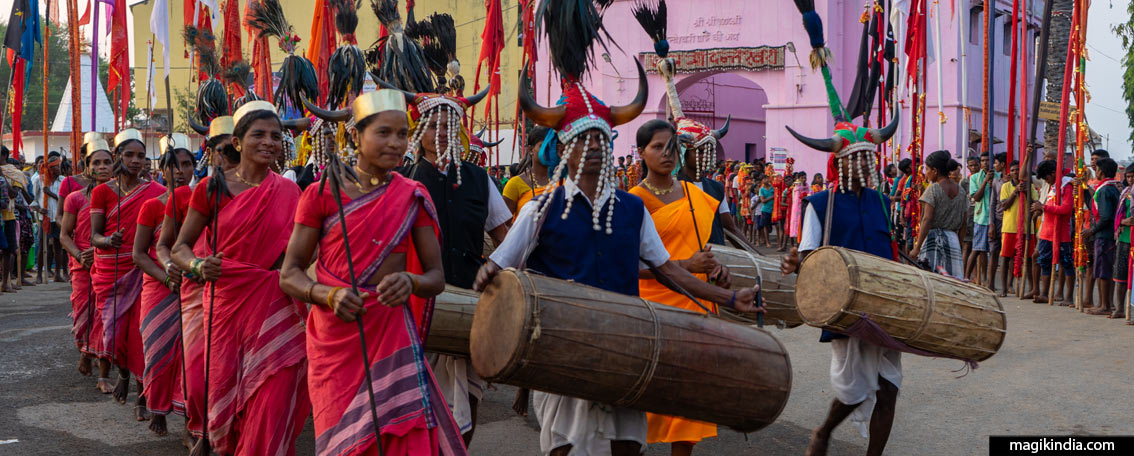
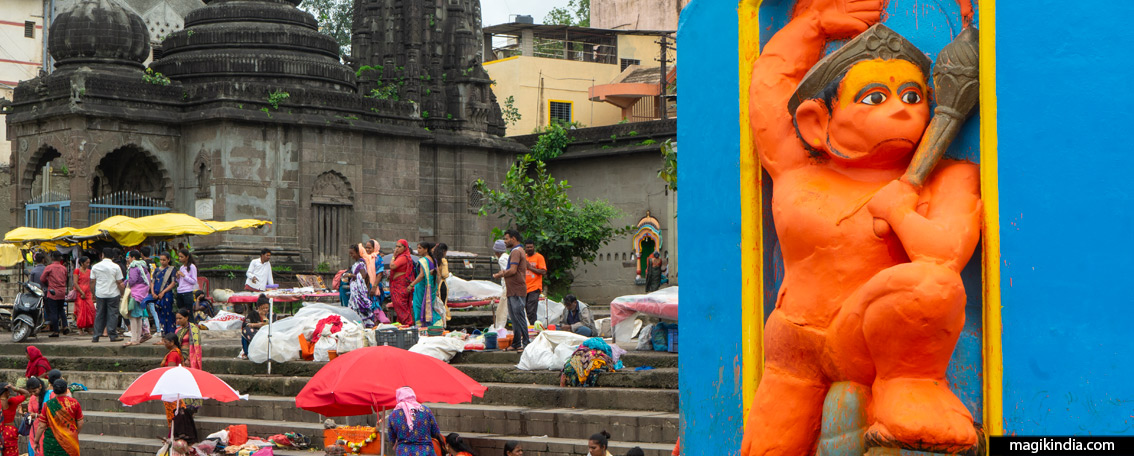
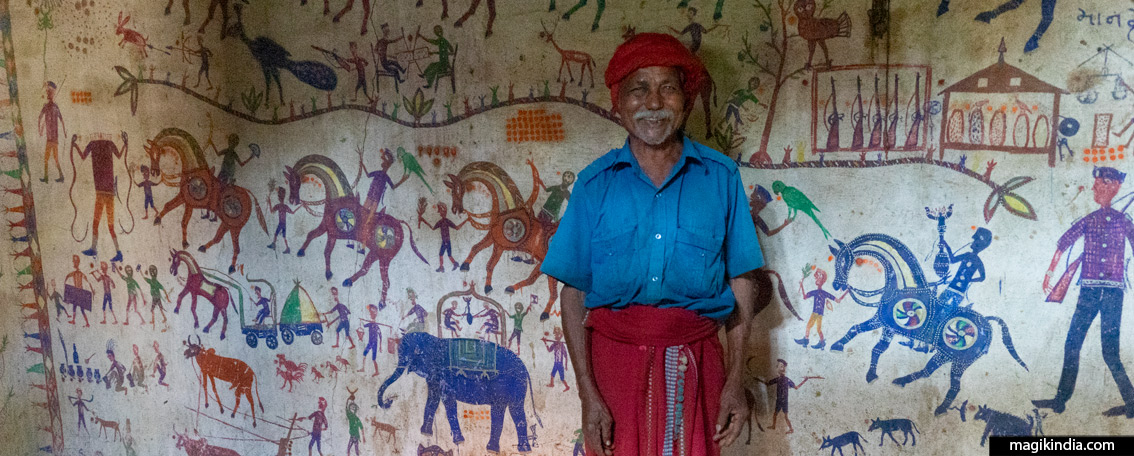
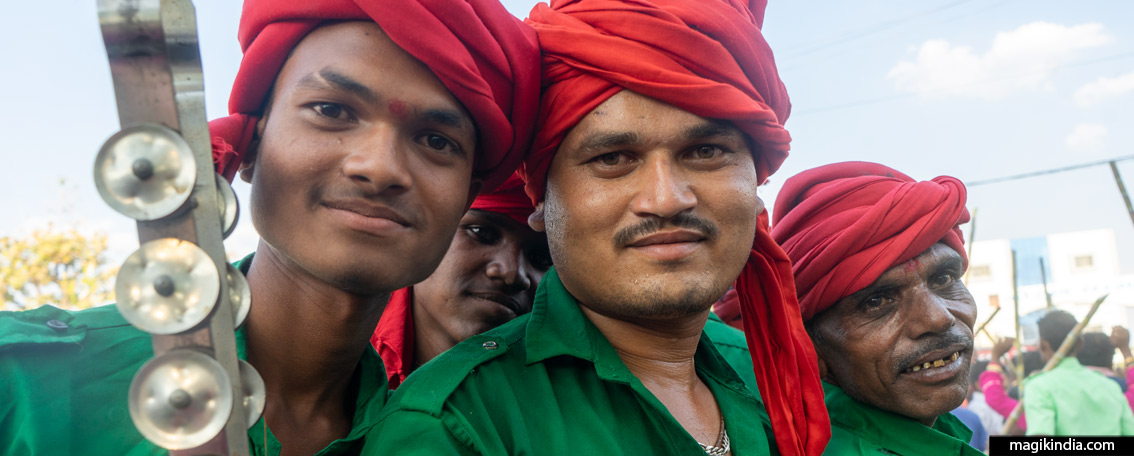
This unique tradition of Bastar is one of a kind and very old tradition.
yes it is!
The Dussehra celebrations in Bastar are one of a kind! The energy, rituals, and grand processions were absolutely mesmerizing.
thanks for your message but please don’t advertise on my website. regards mathini
wow i am so happy to see this dussehra festivals of chhattisgarh
Thanks Kalyani ! 🙂
U have given a very beautiful hidden story infront of d people ❤️❤️
Many thanks for your kind message. Bastar is one of my favourites places in India 🙂
the finest coverage of the bastar dussehra on the internet 🙂 congratulations
Thanks! it’s one of the best festival in India!!
Amazing writeup. Great details. I know where I am headed to this Navaratri.
Thank you ! Dussehra in Bastar is incredible ! have a great journey there !